-

Er,Cr:YAG–2940nm Laser Medical System Rods
- Medical fields:including dental and skin treatments
- Material processing
- Lidar
-

High end face coating capabilities
Optical film coating technology is a key process to deposit multi-layer dielectric or metal films on the substrate surface by physical or chemical methods to accurately control the transmission, reflection and polarization of light waves. Its main capabilities include
-

Large-sized Machining Capability
Large-sized optical lenses (typically referring to optical components with diameters ranging from tens of centimeters to several meters) play a critical role in modern optical technology, with applications spanning multiple fields such as astronomical observation, laser physics, industrial manufacturing, and medical equipment. The following elaborates on application scenarios, function, and typical cases
-
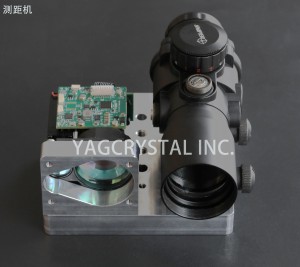
Er:Glass Laser Rangefinder XY-1535-04
Applications:
- Airbore FCS(firecontrol systems)
- Target tracking systems and anti-aircraft systems
- Multi-sensor platforms
- In general for applications of position determination of moving objects
-

An excellent heat dissipation material –CVD
CVD Diamond is a special substance with extraordinary physical and chemical properties. Its extreme performance is unmatched by any other material.
-
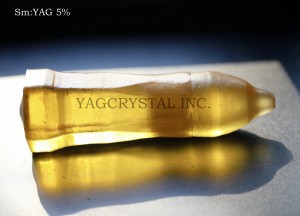
Sm:YAG–Excellent inhibition of ASE
Laser crystal Sm:YAG is composed of the rare earth elements yttrium (Y) and samarium (Sm), as well as aluminum (Al) and oxygen (O). The process of producing such crystals involves the preparation of materials and the growth of crystals. First, prepare the materials. This mixture is then placed in a high-temperature furnace and sintered under specific temperature and atmosphere conditions. Finally, the desired Sm:YAG crystal was obtained.
-
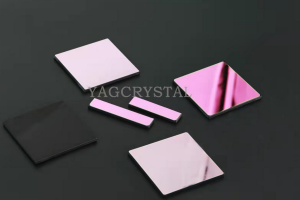
Narrow-Band Filter–Subdivided From The Band-Pass Filter
The so-called narrow-band filter is subdivided from the band-pass filter, and its definition is the same as that of the band-pass filter, that is, the filter allows the optical signal to pass through in a specific wavelength band, and deviates from the band-pass filter. The optical signals on both sides are blocked, and the passband of the narrowband filter is relatively narrow, generally less than 5% of the central wavelength value.
-
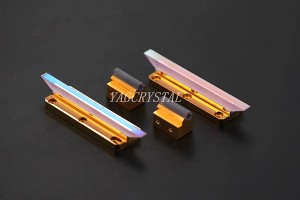
Nd: YAG — Excellent Solid Laser Material
Nd YAG is a crystal that is used as a lasing medium for solid-state lasers. The dopant ,triply ionized neodymium,Nd(lll),typically replaces a small fraction of the yttrium aluminum garnet,since the two ions are of similar size.it is the neodymium ion which provides the lasing activity in the crystal ,in the same fashion as red chromium ion in ruby lasers.
-
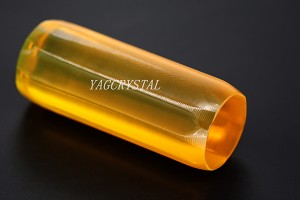
1064nm Laser Crystal For No-water Cooling And Miniature Laser Systems
Nd:Ce:YAG is an excellent laser material used for no-water cooling and miniature laser systems. Nd,Ce: YAG laser rods are the most ideal working materials for low repetition rate air-cooled lasers.
-
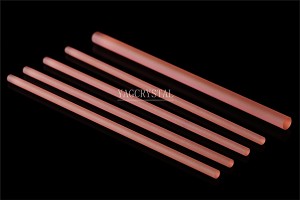
Er: YAG –An Excellent 2.94 um Laser Crystal
Erbium:yttrium-aluminum-garnet (Er:YAG) laser skin resurfacing is an effective technique for minimally invasive and effective management of a number of cutaneous conditions and lesions. Its main indications include treatment of photoaging, rhytids, and solitary benign and malignant cutaneous lesions.
-
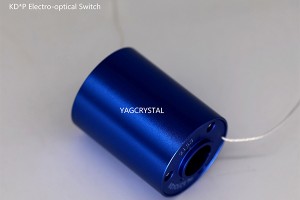
KD*P Used For Doubling, Tripling And Quadrupling Of Nd:YAG Laser
KDP and KD*P are nonlinear optical materials, characterized by high damage threshold, good nonlinear optical coefficients and electro-optic coefficients. It can used for doubling, tripling and quadrupling of Nd:YAG laser at room temperature, and electro-optical modulators.
-
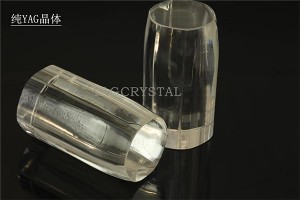
Pure YAG — An Excellent Material For UV-IR Optical Windows
Undoped YAG Crystal is an excellent material for UV-IR optical windows, particularly for high temperature and high energy density application. The mechanical and chemical stability is comparable to sapphire crystal, but YAG is unique with non-birefringence and available with higher optical homogeneity and surface quality.
-
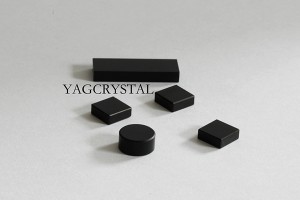
Cr4+:YAG –An Ideal Material For Passive Q-switching
Cr4+:YAG is an ideal material for passive Q-switching of Nd:YAG and other Nd and Yb doped lasers in the wavelength range of 0.8 to 1.2um.It is superior stability and reliability, long service life and high damage threshold.Cr4+:YAG crystals have several advantages when compared to traditional Passive Q-switching choices such as organic dyes and colour centres materials.
-

Ho, Cr, Tm: YAG – Doped With Chromium, Thulium And Holmium Ions
Ho, Cr, Tm: YAG -yttrium aluminium garnet laser crystals doped with chromium,thulium and holmium ions to provide lasing at 2.13 microns are finding more and more applications, especially in the medical industry.
-
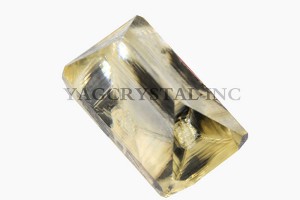
KTP — Frequency Doubling Of Nd:yag Lasers And Other Nd-doped Lasers
KTP exhibits high optical quality, broad transparent range, relatively high effective SHG coefficient (about 3 times higher than that of KDP), rather high optical damage threshold, wide acceptance angle, small walk-off and type I and type II non-critical phase-matching (NCPM) in a wide wavelength range.
-
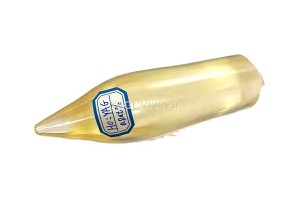
Ho:YAG — An Efficient Means To Generate 2.1-μm Laser Emission
With the continuous emergence of new lasers, laser technology will be more widely used in various fields of ophthalmology. While the research on the treatment of myopia with PRK is gradually entering the clinical application stage, the research on the treatment of hyperopic refractive error is also being actively carried out.
-
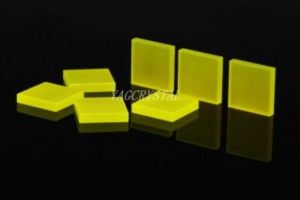
Ce:YAG — An Important Scintillation Crystal
Ce:YAG single crystal is a fast-decay scintillation material with excellent comprehensive properties, with high light output (20000 photons/MeV), fast luminous decay (~70ns), excellent thermomechanical properties, and luminous peak wavelength (540nm) It is well matched with the receiving sensitive wavelength of ordinary photomultiplier tube (PMT) and silicon photodiode (PD), good light pulse distinguishes gamma rays and alpha particles, Ce:YAG is suitable for detecting alpha particles, electrons and beta rays, etc. The good mechanical properties of charged particles, especially Ce:YAG single crystal, make it possible to prepare thin films with a thickness of less than 30um. Ce:YAG scintillation detectors are widely used in electron microscopy, beta and X-ray counting, electron and X-ray imaging screens and other fields.
-
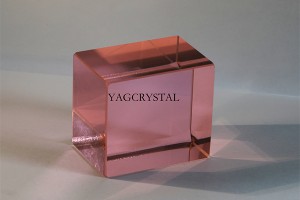
Er:Glass — Pumped With 1535 nm Laser Diodes
Erbium and ytterbium co-doped phosphate glass has a broad application because of the excellent properties. Mostly, it is the best glass material for 1.54μm laser due to its eye safe wavelength of 1540 nm and high transmission through atmosphere.
-
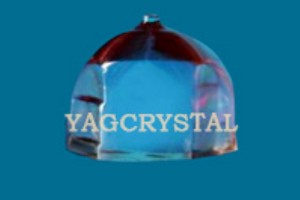
Nd:YVO4 –Diode Pumped Solid-state Lasers
Nd:YVO4 is one of the most efficient laser host crystal currently existing for diode laser-pumped solid-state lasers. Nd:YVO4 is an excellent crystal for high power, stable and cost-effective diode pumped solid-state lasers.
-
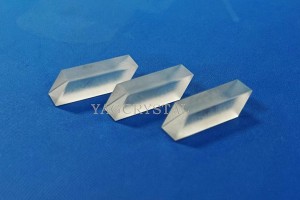
Nd:YLF — Nd-doped Lithium Yttrium Fluoride
Nd:YLF crystal is another very important crystal laser working material after Nd:YAG. The YLF crystal matrix has a short UV absorption cut-off wavelength, a wide range of light transmission bands, a negative temperature coefficient of refractive index, and a small thermal lens effect. The cell is suitable for doping various rare earth ions, and can realize laser oscillation of a large number of wavelengths, especially ultraviolet wavelengths. Nd:YLF crystal has wide absorption spectrum, long fluorescence lifetime, and output polarization, suitable for LD pumping, and is widely used in pulsed and continuous lasers in various working modes, especially in single-mode output, Q-switched ultrashort pulse lasers. Nd: YLF crystal p-polarized 1.053mm laser and phosphate neodymium glass 1.054mm laser wavelength match, so it is an ideal working material for the oscillator of the neodymium glass laser nuclear catastrophe system.
-

Er,YB:YAB-Er, Yb Co – Doped Phosphate Glass
Er, Yb co-doped phosphate glass is a well-known and commonly used active medium for lasers emitting in the “eye-safe” 1,5-1,6um range. Long service life at 4 I 13/2 energy level. While Er, Yb co-doped yttrium aluminum borate (Er, Yb: YAB) crystals are commonly used Er, Yb: phosphate glass substitutes, can be used as “eye-safe” active medium lasers, in continuous wave and Higher average output power in pulse mode.
-
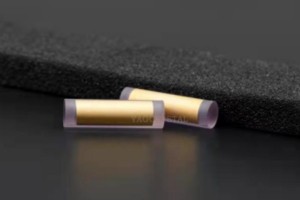
Gold-plated Crystal Cylinder–gold Plating And Copper Plating
At present, the packaging of the slab laser crystal module mainly adopts the low-temperature welding method of solder indium or gold-tin alloy. The crystal is assembled, and then the assembled lath laser crystal is put into a vacuum welding furnace to complete heating and welding.
-
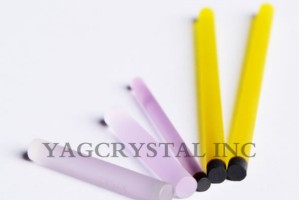
Crystal Bonding– Composite Technology Of Laser Crystals
Crystal bonding is a composite technology of laser crystals. Since most optical crystals have a high melting point, high temperature heat treatment is usually required to promote the mutual diffusion and fusion of molecules on the surface of two crystals that have undergone precise optical processing, and finally form a more stable chemical bond. , to achieve a real combination, so the crystal bonding technology is also called diffusion bonding technology (or thermal bonding technology).
-

Yb:YAG–1030 nm Laser Crystal Promising Laser-active Material
Yb:YAG is one of the most promising laser-active materials and more suitable for diode-pumping than the traditional Nd-doped systems. Compared with the commonly used Nd:YAG crsytal, Yb:YAG crystal has a much larger absorption bandwidth to reduce thermal management requirements for diode lasers, a longer upper-laser level lifetime, three to four times lower thermal loading per unit pump power.
-
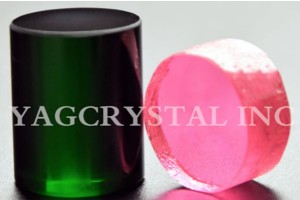
Er,Cr YSGG Provides An Efficient Laser Crystal
Due to the variety of treatment options, dentine hypersensitivity (DH) is a painful disease and a clinical challenge. As a potential solution, high-intensity lasers have been researched. This clinical trial was designed to examine the effects of Er:YAG and Er,Cr:YSGG lasers on DH. It was randomized, controlled, and double-blind. The 28 participants in the study group all satisfied the requirements for inclusion. Sensitivity was measured using a visual analogue scale before therapy as a baseline, immediately before and after treatment, as well as one week and one month following treatment.
-
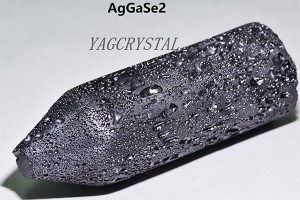
AgGaSe2 Crystals — Band Edges At 0.73 And 18 µm
AGSe2 AgGaSe2(AgGa(1-x)InxSe2) crystals have band edges at 0.73 and 18 µm. Its useful transmission range (0.9–16 µm) and wide phase matching capability provide excellent potential for OPO applications when pumped by a variety of different lasers.
-
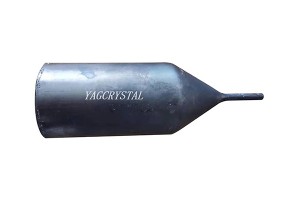
ZnGeP2 — An Saturated Infrared Nonlinear Optics
Due to possessing large nonlinear coefficients (d36=75pm/V), wide infrared transparency range(0.75-12μm), high thermal conductivity(0.35W/(cm·K)), high laser damage threshold (2-5J/cm2)and well machining property, ZnGeP2 was called the king of infrared nonlinear optics and is still the best frequency conversion material for high power, tunable infrared laser generation.
-
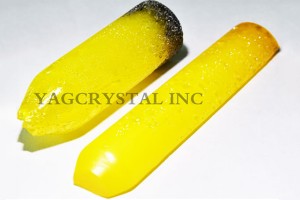
AgGaS2 — Nonlinear Optical Infrared Crystals
AGS is transparent from 0.53 to 12 µm. Although its nonlinear optical coefficient is the lowest among the mentioned infrared crystals, high short wavelength transparency edging at 550 nm is made use of in OPOs pumped by Nd:YAG laser; in numerous difference frequency mixing experiments with diode, Ti:Sapphire, Nd:YAG and IR dye lasers covering 3–12 µm range; in direct infrared countermeasure systems, and for SHG of CO2 laser.
-
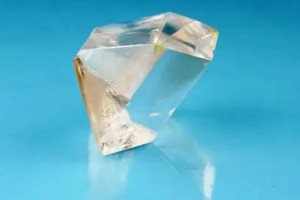
BBO Crystal – Beta Barium Borate Crystal
BBO crystal in nonlinear optical crystal, is a kind of comprehensive advantage obvious, good crystal, it has a very wide light range, very low absorption coefficient, weak piezoelectric ringing effect, relative to other electrolight modulation crystal, has higher extinction ratio, larger matching Angle, high light damage threshold, broadband temperature matching and excellent optical uniformity, is beneficial to improve the laser output power stability, especially for Nd: YAG laser three times frequency has a widely application.
-
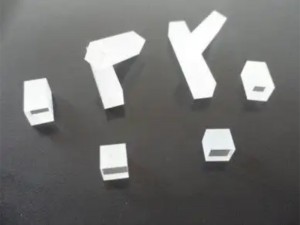
LBO With High Nonlinear Coupling And High Damage Threshold
LBO crystal is a nonlinear crystal material with excellent quality, which is widely used in the research and application fields of all-solid state laser, electro-optic, medicine and so on. Meanwhile, large-size LBO crystal has a wide application prospect in the inverter of laser isotope separation, laser controlled polymerization system and other fields.
-
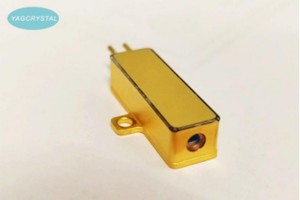
100uJ Erbium Glass Microlaser
This laser is mainly used for cutting and marking non-metallic materials. Its wavelength range is wider and can cover the visible light range, so more kinds of materials can be processed, and the effect is more ideal.
-
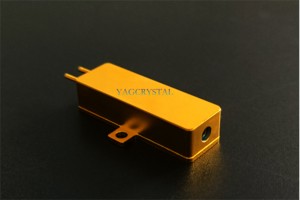
200uJ Erbium Glass Microlaser
Erbium glass microlasers have important applications in laser communication. Erbium glass microlasers can generate laser light with a wavelength of 1.5 microns, which is the transmission window of optical fiber, so it has high transmission efficiency and transmission distance.
-
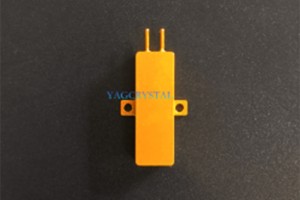
300uJ Erbium Glass Microlaser
Erbium glass micro lasers and semiconductor lasers are two different types of lasers, and the differences between them are mainly reflected in the working principle, application field and performance.
-
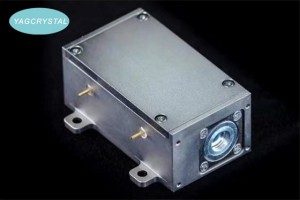
2mJ Erbium Glass Microlaser
With the development of Erbium glass laser,and it is an important type of micro laser right now , which has different application advantages in different fields.
-
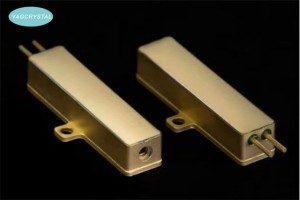
500uJ Erbium Glass Microlaser
Erbium glass microlaser is a very important type of laser, and its development history has gone through several stages.
-
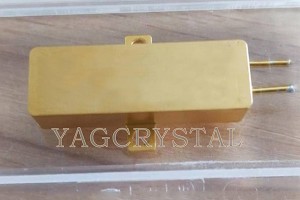
Erbium Glass Micro laser
In recent years, with the gradual increase in the application demand for medium and long-distance eye-safe laser ranging equipment, higher requirements have been put forward for the indicators of bait glass lasers, especially the problem that the mass production of mJ-level high-energy products cannot be realized in China at present. ,waiting to be solved.
-
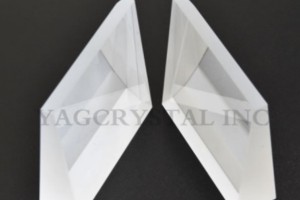
Wedge Prisms Are Optical Prisms With Inclined Surfaces
Wedge Mirror Optical Wedge Wedge Angle Features Detailed Description:
Wedge prisms (also known as wedge prisms) are optical prisms with inclined surfaces, which are mainly used in the optical field for beam control and offset. The inclination angles of the two sides of the wedge prism are relatively small. -
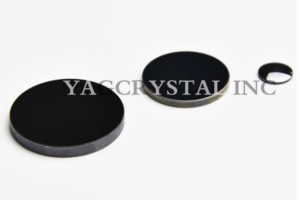
Ze Windows–as Long-wave Pass Filters
The wide light transmission range of germanium material and the light opacity in the visible light band can also be used as long-wave pass filters for waves with wavelengths greater than 2 µm. In addition, germanium is inert to air, water, alkalis and many acids. The light-transmitting properties of germanium are extremely sensitive to temperature; in fact, germanium becomes so absorbing at 100 °C that it is almost opaque, and at 200 °C it is completely opaque.
-
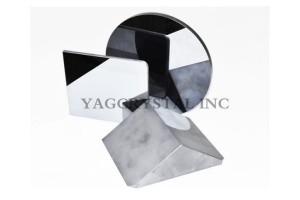
Si Windows–low Density ( Its Density Is Half That Of Germanium Material )
Silicon windows can be divided into two types: coated and uncoated, and processed according to customer requirements. It is suitable for near-infrared bands in the 1.2-8μm region. Because silicon material has the characteristics of low density (its density is half that of germanium material or zinc selenide material), it is especially suitable for some occasions that are sensitive to weight requirements, especially in the 3-5um band. Silicon has a Knoop hardness of 1150, which is harder than germanium and less brittle than germanium. However, due to its strong absorption band at 9um, it is not suitable for CO2 laser transmission applications.
-
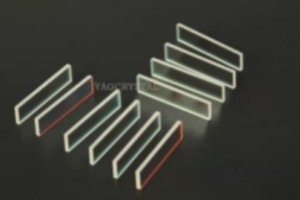
Sapphire Windows–good Optical Transmittance Characteristics
Sapphire windows have good optical transmittance characteristics, high mechanical properties, and high temperature resistance. They are very suitable for sapphire optical windows, and sapphire windows have become high-end products of optical windows.
-
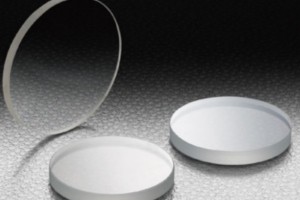
CaF2 Windows–light Transmission Performance From Ultraviolet 135nm~9um
Calcium fluoride has a wide range of uses. From the perspective of optical performance, it has very good light transmission performance from ultraviolet 135nm~9um.
-
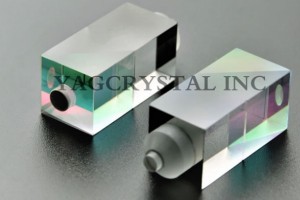
Prisms Glued–The Commonly Used Lens Gluing Method
The gluing of optical prisms is mainly based on the use of optical industry standard glue (colorless and transparent, with a transmittance greater than 90% in the specified optical range). Optical bonding on optical glass surfaces. Widely used in bonding lenses, prisms, mirrors and terminating or splicing optical fibers in military, aerospace and industrial optics. Meets MIL-A-3920 military standard for optical bonding materials.
-

Cylindrical Mirrors–Unique Optical Properties
Cylindrical mirrors are mainly used to change the design requirements of imaging size. For example, convert a point spot to a line spot, or change the height of the image without changing the width of the image. Cylindrical mirrors have unique optical properties. With the rapid development of high technology, cylindrical mirrors are more and more widely used.
-
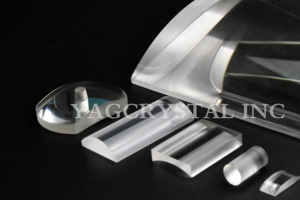
Optical Lenses–Convex And Concave Lenses
Optical thin Lens – A lens in which the thickness of the central portion is large compared to the radii of curvature of its two sides.
-
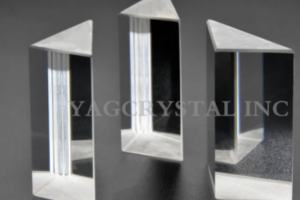
Prism–Used To Split Or Disperse Light Beams.
A prism, a transparent object surrounded by two intersecting planes that are not parallel to each other, is used to split or disperse light beams. Prisms can be divided into equilateral triangular prisms, rectangular prisms, and pentagonal prisms according to their properties and uses, and are often used in digital equipment, science and technology, and medical equipment.
-
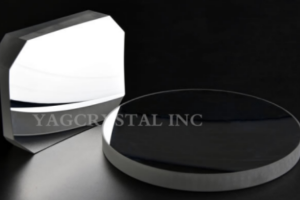
Reflect Mirrors– That Work Using The Laws Of Reflection
A mirror is an optical component that works using the laws of reflection. Mirrors can be divided into plane mirrors, spherical mirrors and aspheric mirrors according to their shapes.
-
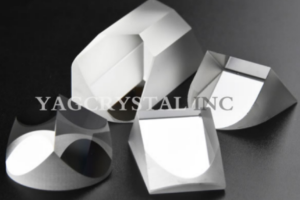
Pyramid–Also Known As Pyramid
Pyramid, also known as pyramid, is a kind of three-dimensional polyhedron, which is formed by connecting straight line segments from each vertex of the polygon to a point outside the plane where it is located.The polygon is called the base of the pyramid. Depending on the shape of the bottom surface, the name of the pyramid is also different, depending on the polygonal shape of the bottom surface. Pyramid etc.
-

Photodetector For Laser Ranging And Speed Ranging
The spectral range of InGaAs material is 900-1700nm, and the multiplication noise is lower than that of germanium material. It is generally used as a multiplying region for heterostructure diodes. The material is suitable for high-speed optical fiber communications, and commercial products have reached speeds of 10Gbit/s or higher.
-
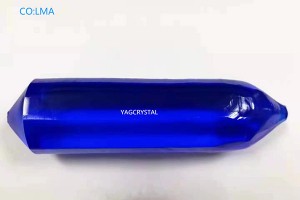
Co2+: MgAl2O4 A New Material For Saturable Absorber Passive Q-switch
Co:Spinel is a relatively new material for saturable absorber passive Q-switching in lasers emitting from 1.2 to 1.6 microns, in particular, for eye-safe 1.54 μm Er:glass laser. High absorption cross section of 3.5 x 10-19 cm2 permits Q-switching of Er:glass laser
-
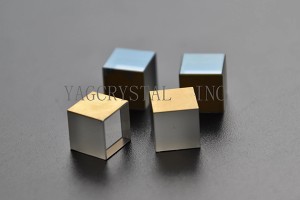
LN–Q Switched Crystal
LiNbO3 is widely used as electro-optic modulators and Q-switches for Nd:YAG, Nd:YLF and Ti:Sapphire lasers as well as modulators for fiber optics. The following table list the specifications of a typical LiNbO3 crystal used as Q-switch with transverse E-O modulation.

